A Smart Farming Management System based on IoT Technologies for Sustainable Agriculture
Volume 9, Issue 1, Page No 1-8, 2024
Author’s Name: Alioune Cisse1,a), Ousmane Diallo1, EL Hadji Malick Ndoye1, Mamadou Sy1, Ousseynou Sene1, Joel José Puga Coelho Rodrigues2
View Affiliations
1Laboratoire d’Informatique et d’Ingénierie pour l’Innovation (LI3), Department of Informatics, University of Assane Seck, B. P. 523 Ziguinchor, Senegal
2COPELABS, Lusófona University, Lisbon, Portugal
a)whom correspondence should be addressed. E-mail: aliounecisse1995@gmail.com
Adv. Sci. Technol. Eng. Syst. J. 9(1), 1-8 (2024); ![]() DOI: 10.25046/aj090101
DOI: 10.25046/aj090101
Keywords: Internet of Things, Smart farming, Smart agriculture, Prototype deployment, Sustainable agriculture, Food self-sufficiency
Export Citations
Advances in Internet of Things (IoT) and wireless technologies are revolutionizing various sectors, including environment, education, healthcare, industry, etc. In the same dynamic, as the world population constantly evolves, solutions based on such technologies need to be proposed to improve the agricultural sector. Senegalese agriculture, primarily rain-fed and based on both cash crops and subsistence food crops, faces challenges from climate change, environmental impacts, and traditional methods. Lack of information on good practices, new efficient and low-cost farming methods, and access to seeds, along with the COVID-19 pandemic, further complicates the situation. This research work proposes a smart farming management system that uses IoT technology, named MbaïMi, whose main objective is to improve Senegalese agriculture through new digital technologies for sustainable agriculture, environmental benefits and food self-sufficiency. It provides a real- time decision support tool that offers farmers best seeds to choose at the beginning of work and helps optimize water resources. Additionally, the system includes features like sending SMS/advice, graphical visualizing of temperature and humidity changes for greenhouse cultivation control. The development of a web and mobile application, deployment of a prototype in southern Senegal, and validation case studies demonstrate the system’s potential to improve farmers’ yields and daily hard work to meet the challenges of sustainable agriculture, environmental benefits and food self-sufficiency.
Received: 20 October 2023, Accepted: 19 December 2023, Published Online: 20 January 2024
1. Introduction
In general, IoT enables process automation by eliminating or reducing human interaction. In the automation process, IoT uses sensors to collect data, controllers to process the data, and actuators to complete the automation process [1]-[4].
To face the challenge of using IoT in various sectors of life in order to improve the living conditions of populations with sustainable development, researchers, practitioners and academics have proposed innovative solutions from the use of IoT technologies in several areas like healthcare, education, automation, industry and agriculture [5]-[7].
The term “smart agriculture” or “smart farming” has emerged as a result of the application of new technological innovations in the agricultural sector, including wireless sensors, Internet of Things (IoT), smart networks, location systems, data science, artificial intelligence, automation, robotics technologies, etc. [8], [9]. Therefore, the main goal of smart agriculture and smart farming is to automate all aspects of farming and agricultural methods to make the process more efficient and effective. This is a global challenge with applications as solutions to solve various problems, including the increased need for improving the quality and quantity of crops, the increased demand for food self- sufficiency, labor force shortages, and the aging of farmers, as well as the expansion of cutting-edge agricultural technology and the optimization of human labor [7]-[10].
Smart farming may be used for remote and automated control of soil quality, precision irrigation, precision plant nutrition, climate change as well as monitoring and proper growth of crops and livestock by taking advantage of efficient management of sensor-generated data. [11]-[13]. These sensor’s data are transmitted via wired or wireless communication technology in database servers or cloud platforms to be processed and analyzed by the algorithms in place.
Senegalese agriculture is mainly rain-fed and seasonal, based on both cash crops and subsistence food crops. The vast majority of agricultural producers and livestock managers are smallholders that use traditional approaches with many inefficiencies such as higher human interaction and labor cost and face the challenges of climate change, environmental impact and rudimentary means. Added to this the lack of information on good practices, new efficient and low-cost farming methods and technologies, accessing good seeds, the recently economic effects of the COVID-19 pandemic and monetary changes in view (ECO in the UEMOA zone). Efforts must be devoted to the search of scale savings in the name of competitiveness, in particular by increasing agricultural production volumes [14].
This research work proposes the deployment of a smart farming management system that uses IoT Technology for sustainable agriculture, called MbaïMi. The proposed idea employs soil pH, humidity and ambient air temperature, and soil moisture level to provide a real-time categorization of the best crops for a specific soil. Additionally, the system uses this information to automatically manage irrigation as well as manage ambient temperature and humidity for greenhouse farming. The main contributions of this work are:
- The proposal of a smart farming management system architecture that uses IoT technology to remotely and automatically control and increase crop quality and quantity while optimizing human labor.
- The proposal of underlying algorithms of the system.
- The suggestion of a real-world, IoT-based smart farming management system prototype.
- The launch of the smart farming management web and mobile application called MbaïMi, which classifies the best crops for a specific soil in real-time based on factors including soil pH, humidity and ambient air temperature, and soil moisture level. Moreover, the proposal allows to automatically manage irrigation and ambient temperature and humidity for greenhouse cultivation.
- Prototype deployment in the southern region of Senegal and some case studies for evaluation and validation. This shows that the proposal can efficiently help farmers to improve their yields, facilitate their daily hard works to meet challenges of sustainable agriculture, environmental benefits and food self- sufficiency
The rest of this paper is structured as follows. Section 2 presents the related work addressing the most relevant solutions available in the literature. Section 3 describes the proposed system architecture with its underlying algorithms, while the technologies used for the system deployment are presented in Section 4. The
Validation of the proposal via a case study is presented in Section 5. Finally, Section 6 concludes the paper and presents future research works.
2. Related Work
Nowadays, humanity is facing many phenomena such as climate change, floods, and threatening bush fires, which are exposing people, especially in parts of Africa, to famine. Hence, according to the arguments of the coordinator of the PIESAN (Project for Eco-Sustainable Intensification of Agriculture in the Niayes (a locality in Senegal)), the natural degradation of the soil resulting from salinization and acidification, the lack of application of good sustainable agricultural practices (BPAD), unsuitable irrigation and water quality are among the constraints of the agricultural sector. In addition, it adds to these constraints, the lack of control of climatic hazards, the low adoption of proven technical and technological innovations [15].
To overcome this situation, researchers proposed solutions to address food self-sufficiency challenges, aiming to improve agricultural systems through new effective methods.
The work in this paper [10] proposed the design of a smart farm prototype in Thailand, featuring an automatic water control system using IoT devices and sensors. The system consists of a Raspberry Pi board installed in a control box to collect data from the field using a DHT22 sensor and a web-based application. Performance evaluation on a rice farm in Thailand demonstrated its usefulness for Agricultural 4.0 and increased productivity.
In Senegal, E-Tolby has been introduced that is a mobile and web application aimed at improving agricultural output and field watering. It offers real-time decision-making, digital farmer profiles, irrigation water and fertilizer inputs management, and remote practices. Additionally, E-Tolbi offers farming organizations up-to-the-minute information on crop yields on fields and manufacturing facilities. However, the E-Tolbi’s algorithm doesn’t consider the knowledge of the best crops/seeds for a specific soil [16][17].
A low-cost framework for food traceability is proposed in [18], using commercial and proprietary sensing devices to monitor air, water, soil parameters, and herbicide contamination during farming. The proposed framework includes an automated prototype for in situ glyphosate detection, monitoring indicators like temperature, humidity, and pH of the irrigation water, total Volatile Organic Compounds (VOCs) and equivalent CO2. The performance evaluation was conducted in an Italian olive farming company, proving its efficacy in food traceability.
The study in [19] proposed a low-cost intelligent system for smart irrigation using IoT technologies. It includes admin mode, onetime irrigation schedule estimation, neural-based decision making, and remote data monitoring. The system uses MQTT and HTTP to inform in real-time farmers about crop conditions and the performances evaluation is performed with a sample crop test-bed for presenting results that include irrigation schedule, neural net decision making and remote data viewing. The authors claim that their proposal proves beneficial with its intelligence, low cost and portability, making it suitable for farms and greenhouse.
AgroCares [20], a Dutch agricultural technology firm, has introduced a soil scanner in Kenya using NIR (near infrared technology) technology. The system provides farmers with immediate information on soil nutritional quality, enabling them to apply appropriate fertilizer. Agrocares offers various application services, including SoilCares, LeafCares, FeedCares, and InsectCares. The little Lab-in-a-Box is a portable detection laboratory for doing on-site analyses of micro and macronutrients. However, the solution requires daily presence on the property to update the samples and does not consider the knowledge of the best crops/seeds according to soil’s condition.
FertiTogo, an interactive digital tool introduced during the 12th national Togolese peasant forum, helps farmers determine their agricultural soil fertility and provide precise fertilization recommendations. Using soil spectroscopy, it is a Togo-specific solution, lacking individual sensors and irrigation water control. However, updating the information requires constant implanting and pressing a button, which is not very practical [21].
The proposed smart agriculture model in [22] aims to develop a real-time monitoring system for soil properties, consisting of Farm, Server, and Client levels. It implements decision support advisory models for pest and disease forewarning, crop disease identification, and SMS alerts. The proposed network model implements connected objects with 802.15.4/Zigbee radio links, which therefore limits the range of the solution to small areas.
Based on the literature, the proposals share some similarities with the MbaïMi paper. However, as far as we know, none of the current proposed smart farming systems utilize soil pH, humidity, ambient air temperature, and soil moisture level measurements to provide large-scale farm managers with an effective real-time decision support tool for their agricultural practices, offering them best seed selection from the outset of their field work. Additionally, the proposal includes a prototype deployment, along with a web and mobile application.
3. Architecture of the Proposed Smart Farm Management System
The proposed architecture of the smart farm management system is depicted in Figure. 1. The goal is to facilitate communication between the various components of the system. This communication can be identified in several steps.
The key components of the system consist of an Arduino MEGA 2560 board, a water pump, sensors like soil pH sensor, soil moisture sensor, and temperature and humidity sensors (DHT11), a cloud service, and a web and mobile application.

Figure 1: Illustration of the proposed architecture for a smart farm management system
3.1. Description of the Architecture
Studied crops field: The crop farm being studied incorporates IoT devices, including an Arduino MEGA 2560 board (refer to Figure. 2) and a water pump. It also utilizes sensors such as a soil moisture sensor (refer to Figure. 3. A), a soil pH sensor (refer to Figure. 3. B), and DHT11 sensors for temperature and humidity (refer to Figure. 3. C). These sensors gather essential data on soil moisture, acidity, ambient temperature, and air humidity, which are then transmitted through the Gateway for real-time management or to cloud computing services for in-depth analysis. The network technologies considered for transmitting this data include:
Wi-Fi : between farm equipment and the Gateway;
G/5G : between the Gateway and the Cloud service.
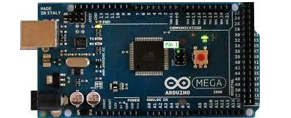
Figure 2: Arduino Mega 2560 board.

Figure 3: (A) The soil moisture sensor,

Figure 3: (B) The pH sensor,

Figure 3: (C) The DHT11 sensor.
Real-time farming management: A web or mobile application allows farmers to access real-time information about the farm under study. The data is presented in different formats, including graphical representations of ambient humidity and temperature, with other data shown in percentages. Additionally, the algorithm proposed in this work provides a classification of the most suitable crops or seeds based on soil pH to increase yield. Furthermore, some tasks such as watering can be managed through the application.
Cloud computing services: It provides administration services for the proposed system’s applications, database, and operating algorithm. Then, users may remotely access these data using a computer or a smartphone. The cloud service will enable additional analysis of the data gathered from the farm being studied.
Remote farming management: the farm management services of the proposed system can also be accessed remotely via a web or mobile application housed in the cloud and especially for further analysis of the data captured.
3.2. Proposed Soil pH Check Algorithm
The proposed algorithm is based on the soil’s pH level. The pH level captured is recorded in the variable denoted v. Therefore, the value in v undergoes verification in intervals of values corresponding to the acidity or alkalinity (basic) level of the soil (see Figure. 4).
After determining the level of alkalinity or acidity of the soil, the algorithm will check the adaptability of the crops or seeds selected in percentage based on the predefined ranges for each crop or seed.
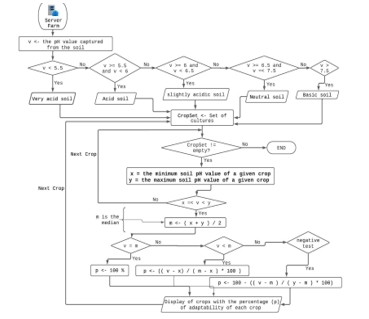
Figure 4: Algorithm for checking soil’s pH.
3.3. Proposed Automatic Plant Watering Algorithm
Automatic plant watering is achieved by monitoring soil moisture levels and setting threshold values for each type of crop. The proposed algorithm, shown in Figure. 5), automates the watering process by comparing the soil humidity named “hSol” to the defined threshold values for a specific crop [hSolMinC; hSolMaxC]. “hSolMinC” represents the minimum soil moisture value, while “hSolMaxC” represents the favorable maximum soil moisture value for a particular crop.

Figure 5: Automatic Plant Watering Algorithm.
3.4. Proposed Ambient Humidity and Temperature Management Algorithm
Humidity and temperature parameters affect the proper growth of plants in a farm. Each crop has its preferred climate range for optimum quality assurance in production. This is why threshold values are provided to study the frequency of optimum conditions and then alarm the farmer. The study of these parameters is especially useful for greenhouse agriculture. The proposed algorithm is shown in Figure. 6.
- Let T be the collected ambient temperature and [Tx; Ty] represents the defined range conducive to optimal crop growth;
- Let H be the collected ambient humidity and [Hx; Hy] represents the defined range conducive to good crop
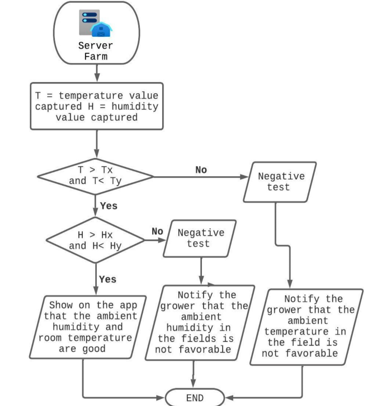
Figure 6. Ambient Humidity and Temperature Management Algorithm.
4. Used Technologies for the System Deployment
The paper’s work is based on a monolithic application that depicts a multi-level software application, where various components are integrated into a single program from a unified platform.
Choosing the right technology is a crucial step in developing an application, as its performance, durability, security, and time efficiency all depend on this choice. The Table 1 below provides a summary of the technologies used in this work.
Table 1: Summary of the used technologies.
| Technologies | Target/Use | characteristics |
|
Visual studio code frameworks [23] |
implementation IDE of the web application |
– integrate a debugging console – integrate a terminal for launching server commands – features a robust code auto-completion engine (IntelliSense) |
|
ReactJS and AngularJS frameworks [24][25] |
front-end web application programming language |
– Free developed JavaScript library – develops native Android and iOs applications |
|
NestJS [25] |
Language used for the back end. |
– Integrate TypeScript, object-oriented and reactive functional programming – server-side technology based on Node.js – API NEST access |
|
Arduino Software [26] |
coding the microcontroller |
– open-source Arduino Software for writing and uploading code to Arduino boards – provides autocompletion, code navigation and live functionality – debugger |
| MongoDB [27] | Manages smart farming data |
– version 6.0.1. – Manges NoSQL databases |
5. System Evaluation and Validation
5.1. Electronic Diagram of The Smart Farm System Prototype based on IoT
Figure. 7 displays the circuit diagram of the proposed prototype system, which was generated using Fritzing software [28]. In addition to the sensors mentioned in section 3.1, the system prototype includes:
MEGA 2560 microcontroller
The Arduino Mega 2560 board, powered by an ATMega2560 running at 16 MHz, offers 54 I/O, comprising 14 PWM, 16 analog, and 4 UARTs [29]. It includes ports for extra modules and a bootloader for programming alterations. While it is better suited for intricate projects than the Uno board [30], the Arduino MINI [31] is more suitable for farming use.
A Sprinkler Pump
In the prototyping process, a small water pump is utilized as a sprinkler pump. It is equipped with a small water output pipe and requires a 5V power supply.
A relay module
The Arduino board outputs 5V, necessitating a relay to alternate between the Arduino and a 12V or higher sprinkler pump, allowing for the pump to be powered on or off.
A SIM800L module
This mini-module supports 2G GSM and GPRS data, requires minimal power (3.4V to 4.4V), supports advanced AT instructions, and uses a serial communication interface, compatible with Arduino boards.
An ESP 32 module
The prototype employs a 38-pin ESP32 module, which is a development board featuring the SMD ESP32-WROOM-32 microcontroller, to test system functionalities [32]. This setup enables the control of sensors, modules, and actuators through Wi- Fi 802.11 b/g/n and dual mode Bluetooth version 4.2. The module is equipped with two cores, 38 GPIO pins, 16 PWM channels, and 4MB flash memory. It utilizes a micro USB Type B for power and ESP32 programming, integrating the USB controller to UART CP2102.

Figure 7: The electronic prototype diagram designed using Fritzing software [28].
5.2. Smart Farm Management System Prototype Deployment
The smart farm management system, utilizing IoT technologies, was created to offer real-time guidance to farmers, empowering them to make informed decisions in their agricultural practices. The system also assists in the management of water resources. Figure. 8 depicts the actual prototype’s deployment at a farm in Senegal’s southern area, serving as a case study for testing and validation.

Figure 8. Deployment Capture of the actual prototype for testing and validation.

Figure 9: Web application access page.
5.3. The Smart Farm Web App
The MbaïMi smart agriculture Web application uses sensor data like readings of the pH of the soil, the humidity and temperature, and the soil moisture level to categorize in real-time crops for specific soils, assisting farmers in selecting seeds that are best suited to the soil, thereby increasing production.
5.4. Web application access interface
The home page is user-friendly, but after opening the program, the administrator or farmer has to authenticate themselves to use its features (see Figure. 9).
5.5. Interface for users setting
This MbaïMi system allows administrators and farmers to manage users by assigning roles, entering user information (first name, last name, phone number) and receiving an automatic login password via SMS or email (Figure. 10).
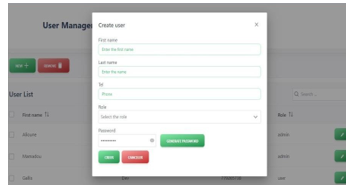
Figure 10: Interface for users setting.
5.6. Interface for setting the studied farm
An administrator or farmer navigates to a menu-rich page to manage different farms (see Figure. 11), managing operations like creation, visualization, update, and deletion, and identifying farms by name, owner, and area.

Figure 11: Interface for setting the studied farm.
5.7. Interface for setting the used sensors
An administrator or farmer conFigureures various sensors and actuators, providing information about their names, types, and connected nodes on a page like Figure. 12.

Figure 12: Interface for setting the sensors.
5.8. Interface for crop settings
The interface below (see Figure. 13.) allows users to set thresholds for investigated factors like pH, soil moisture, and leaf humidity, and includes descriptions of each crop to improve seed information in the database.

Figure 13: Interface for setting crops.
5.9. Interface showing real-time categorization of best crops /seeds for a studied soil
In the web or mobile application, crops/seeds are displayed along with farm’s adaptation percentages using ergonomic graduated color bands (see Figure. 14). For example, watermelon seeds are favorable for the studied farm with a percentage of 95.59%, so the green color band, whereas the passion fruit seeds are unfavorable with a percentage of 8.83%, hence the red band. By choosing the best crops /seeds for a specific soil one may reach challenge sustainable agriculture, reduces environmental degradation and waste seeds and products through more efficient use land, water, fertilizers and pesticides.

Figure 14: Real-time categorization of the best crops for a given soil.
5.10. Interface for displaying the statistical data
Administrators can monitor sensor data collected on each farm node and visualize temperature and humidity evolution diagrams on the statistics page (see Figure. 15.).

Figure 15:. Display of the statistical data.
5.11. The Smart Farm Mobile Application
As shown in Figure. 16., the user initiates the mobile application and inputs their personal information to access their user space.
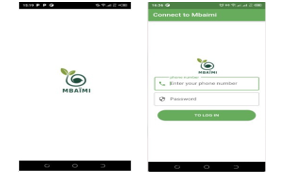
Figure 16: Mobile App Authentication.
The mobile application also assists farmers to consult adapted crops by monitoring sensor data collected every 10 minutes as well as the temperature and humidity diagrams of the farm (see Figure. 17). It also allows famers to manually control watering of plants and send automatic SMS messages, since they may not have a constant connection to the internet.

Figure 17: Display of the mobile application sensor data.
6. Conclusions and Future Works
This paper introduces MbaïMi, an implementation of a smart farm management web and mobile application with a real hardware prototype that uses IoT technology, which provides farmers an effective decision- support tool for their agricultural practices. The system uses soil pH, humidity, temperature, and moisture levels to determine the soil acidity used to provide a real- time categorization of best crops for specific soils, aiding in seed selection and increasing production. The system also offers autonomous irrigation and temperature control, optimizing water resource utilization and encouraging greenhouse farming.
The MbaïMi system is a promising decision support tool for farmers in Senegal. The development of web and mobile applications and the deployment of the prototype in southern
Senegal show that the system provides real-time categorization of the best crops /seeds, allows automatic irrigation and automatic management of ambient temperature and humidity of the studied soil. This demonstrates the system can improve farmer’s yields and daily hard work to meet the challenges of sustainable agriculture, environmental benefits and food self-sufficiency
LoRa technology is ideal for wireless communication in southern Senegal due to its 20 km transmission range and private mode conFigureuration. Therefore, for future works we plan to include the LoRa technology for communication between the IoT devices in farms and the gateways.
7. Acknowledgements
This work is partially funded by Brazilian National Council for Scientific and Technological Development – CNPq, via Grant No. 306607/2023-9, and the LI3 laboratory of the Assane Seck University of Ziguinchor.
- S.R.J. Ramson, S. Vishnu, M. Shanmugam, “Applications of Internet of Things (IoT) – An Overview,” in IEEE 2020 5th International Conference on Devices, Circuits and Systems (ICDCS), 92–95, March 2020, doi:10.1109/ICDCS48716.2020.243556.
- A.R. Madushanki, M.N Halgamuge, W. A., A. Syed, “Adoption of the Internet of Things (IoT) in Agriculture and Smart Farming towards Urban Greening: A Review,” Int. Journal of Advanced Computer Science and Applications, 10(4), 2019, doi:10.14569/IJACSA.2019.0100402.
- Z. Eghbali, M.Z. Lighvan, “A hierarchical approach for accelerating IoT data management process based on SDN principles,” Journal of Network and Computer Applications, 181, 103027, 2021, doi:10.1016/j.jnca.2021.103027.
- A.A. Sadri, A.M. Rahmani, M. Saberikamarposhti, M. Hosseinzadeh, “Fog data management: A vision, challenges, and future directions,” Journal of Network and Computer Applications, 174, 102882, 2021, doi:10.1016/j.jnca.2020.102882.
- A. Khanna, S. Kaur, “Evolution of Internet of Things (IoT) and its significant impact in the field of Precision Agriculture,” Computers and Electronics in Agriculture, 157(2), 218–231, 2019, doi:10.1016/j.compag.2018.12.039.
- J. Muangprathub, N. Boonnam, S. Kajornkasirat, N. Lekbangpong, A. Wanichsombat, P. Nillaor, “IoT and agriculture data analysis for smart farm,” Computers and Electronics in Agriculture, 156, 467–474, 2019, doi:10.1016/j.compag.2018.12.011.
- M. Raj, S. Gupta, V. Chamola, A. Elhence, T. Garg, M. Atiquzzaman, D. Niyato, “A survey on the role of Internet of Things for adopting and promoting Agriculture 4.0,” Journal of Network and Computer Applications, 187, 103107, 2021, doi:10.1016/j.jnca.2021.103107.
- T. Talaviya, D. Shah, N. Patel, H. Yagnik, M. Shah, “Implementation of artificial intelligence in agriculture for optimisation of irrigation and application of pesticides and herbicides,” Artificial Intelligence in Agriculture, 4, 58–73, 2020, doi:10.1016/j.aiia.2020.04.002.
- E.H.M. Ndoye, O. Diallo, N. Hakem, E.N. Cabral, “Interference-Aware Nodes Deployment of a LoRa-Based Architecture for Smart Agriculture in the Southern Region of Senegal,” Advances in Science, Technology and Engineering Systems Journal, 7(6), 248–255, 2022, doi:10.25046/aj070628.
- P. Suanpang, P. Jamjuntr, “A Smart Farm Prototype with an Internet of Things (IoT) Case Study: Thailand,” Journal of Advanced Agricultural Technologies, 6(4), 241–245, 2019, doi:10.18178/joaat.6.4.241-245.
- S. Kim, M. Lee, C. Shin, “IoT-Based Strawberry Disease Prediction System for Smart Farming,” Sensors, 18(11), 4051, 2018, doi:10.3390/s18114051.
- V.R. Pathmudi, N. Khatri, S. Kumar, A.S.H. Abdul-Qawy, A.K. Vyas, “A systematic review of IoT technologies and their constituents for smart and sustainable agriculture applications,” Scientific African, 19(11), e01577, 2023, doi:10.1016/j.sciaf.2023.e01577.
- A. Mukherjee, S. Misra, N.S. Raghuwanshi, “A survey of unmanned aerial sensing solutions in precision agriculture,” Journal of Network and Computer Applications, 148, 102461, 2019, doi:10.1016/j.jnca.2019.102461.
- S.S.A. Emira, K.Y. Youssef, M. Abouelatta, “Simulated IoT Based Sustainable Power System for Smart Agriculture Environments,” Advances in Science, Technology and Engineering Systems Journal, 6(1), 1030–1039, 2021, doi:10.25046/aj0601114.
- PIESAN, Newsletter Project information of Eco-Sustainable Intensification of Agriculture in the Niayes, N°01, 2021.
- S. Abdelkrim, L. Daniel, “Agritech : A la découverte de « Tolbi », la startup qui modernise l’agriculture sénégalaise,” StartupBRICS. StartupBRICS L’actu Tech & Startup Des Emergents, 2022, https://startupbrics.com/.
- TOLBI, https://tolbico.com, 2022.
- A.V. Radogna, M.E. Latino, M. Menegoli, C.T. Prontera, G. Morgante, D. Mongelli, L. Giampetruzzi, A. Corallo, A. Bondavalli, L. Francioso, “A Monitoring Framework with Integrated Sensing Technologies for Enhanced Food Safety and Traceability,” Sensors, 22(17), 6509, 2022, doi:10.3390/s22176509.
- N.K. Nawandar, V.R. Satpute, “IoT based low cost and intelligent module for smart irrigation system,” Computers and Electronics in Agriculture, 162, 979–990, 2019, doi:10.1016/j.compag.2019.05.027.
- AgroCares. “Smart Farming | Nutrient Testing – AgroCares. AgroCares nutrient intelligence,” 2022, https://www.agrocares.com/.
- FertiTogo, “Plate-forme FertiTogo, système d’aide à la décision et à l’information,” FertiTogo, 2022.
- K.A. Patil, N.R. Kale, “A model for smart agriculture using IoT,” in 2016 International Conference on Global Trends in Signal Processing, Information Computing and Communication (ICGTSPICC), IEEE: 543–545, 2016, doi:10.1109/ICGTSPICC.2016.7955360.
- StudioVisual, Documentation for Visual Studio Code, 2022.
- Ionic, https://ionicframework.com/docs., Introduction to Ionic, 2022.
- NestJS., https://docs.nestjs.com, Documentation, 2022.
- Arduino, https://docs.arduino.cc/., Documentation., 2022.
- MongoDB, https:/www.mongodb.com/., 2023.
- Fritzing Software, https://fritzing.org/, 2023.
- Arduino Mega2560:, “https://store.arduino.cc/products/arduinomega-2560-rev3,” 2023.
- Arduino UNO, https://docs.arduino.cc/hardware/uno-rev3., 2023.
- Arduino Pro, https://docs.arduino.cc/retired/boards/arduino-pro-mini., 2023.
- ESP32, “http://esp32.net/.,” 2023.
No. of Downloads Per Month
No. of Downloads Per Country
